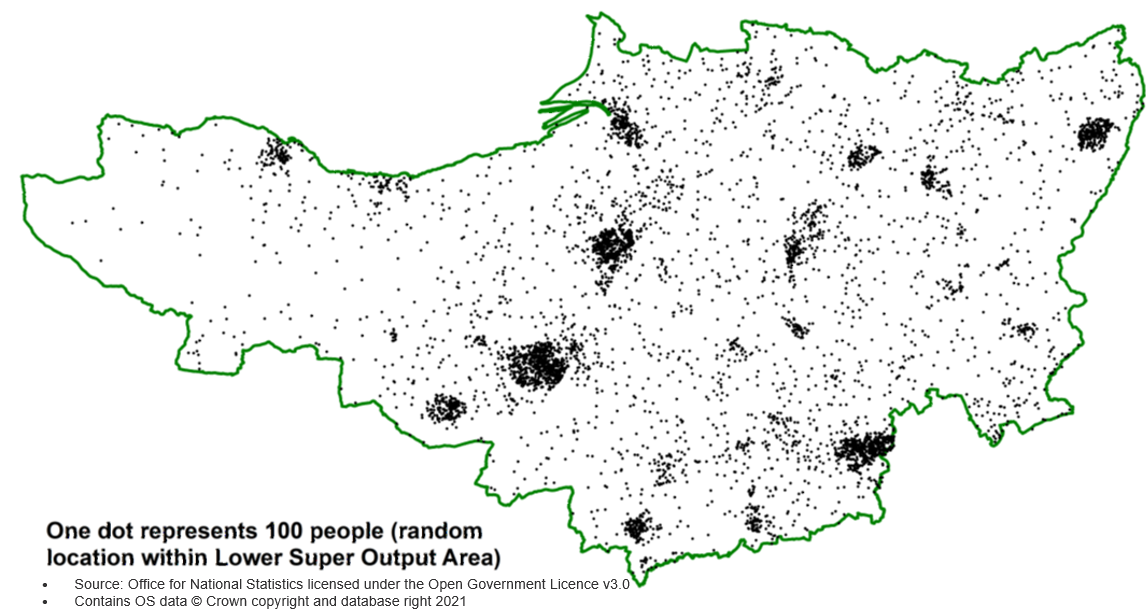Population Estimates
Interactive maps and graphs of the latest population trends and data are available on the Somerset Intelligence website, which also provides information from the 2021 Census.

Population Density in Somerset
Population numbers and characteristics lie as fundamental determinants of the total demand for health and care services. Somerset is characterised by a population that is growing in numbers, and with a higher proportion of older people than the national average. Growth is largely from migration, with people moving in for work – particularly in and around urban areas, and at retirement, particularly on the coast and rural areas. The proportion of older people is growing whilst that of working-age is declining. This means that fewer working age people are potentially available to provide care for the older people, who tend to have greater and more complex health needs. This is the greatest strategic challenge to provision of health and care services in the county, as discussed in the Joint Strategic Needs Assessment report on ageing well.
The population is divided approximately equally between rural and urban. Housing estates in the major towns are the areas of Somerset that score highest on the Index of Multiple Deprivation, and although they tend to have younger populations than the countryside, the conditions associated with poor housing and low income mean that there are areas of considerable health need, as covered in the Joint Strategic Needs Assessment report on vulnerable children and young people. Rural areas are generally fairly prosperous, especially within commuting distance of the towns, but the mix of housing types can mean that individuals and households in need are ‘lost in the averages’, and providing services to a widely dispersed population is a particular challenge. Rural health needs were explored in the Joint Strategic Needs Assessment report on rural health need.
